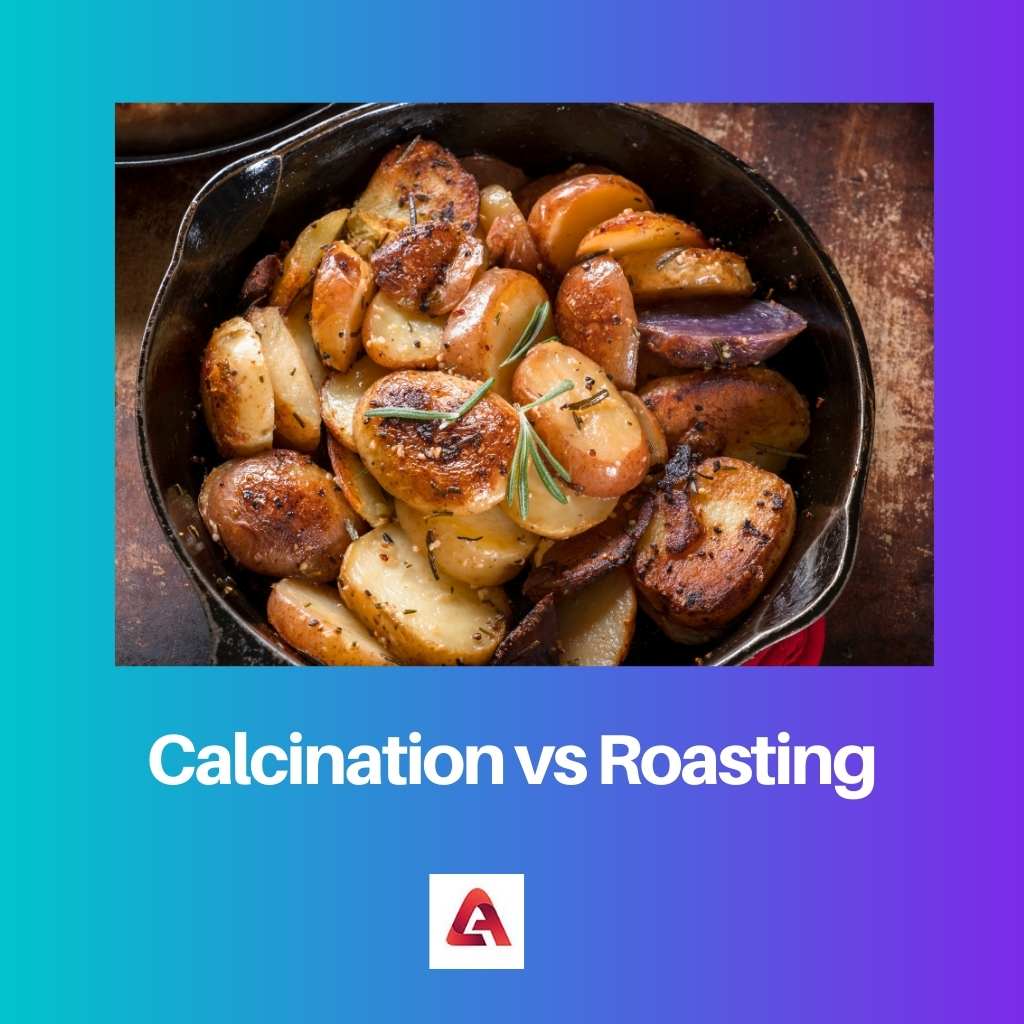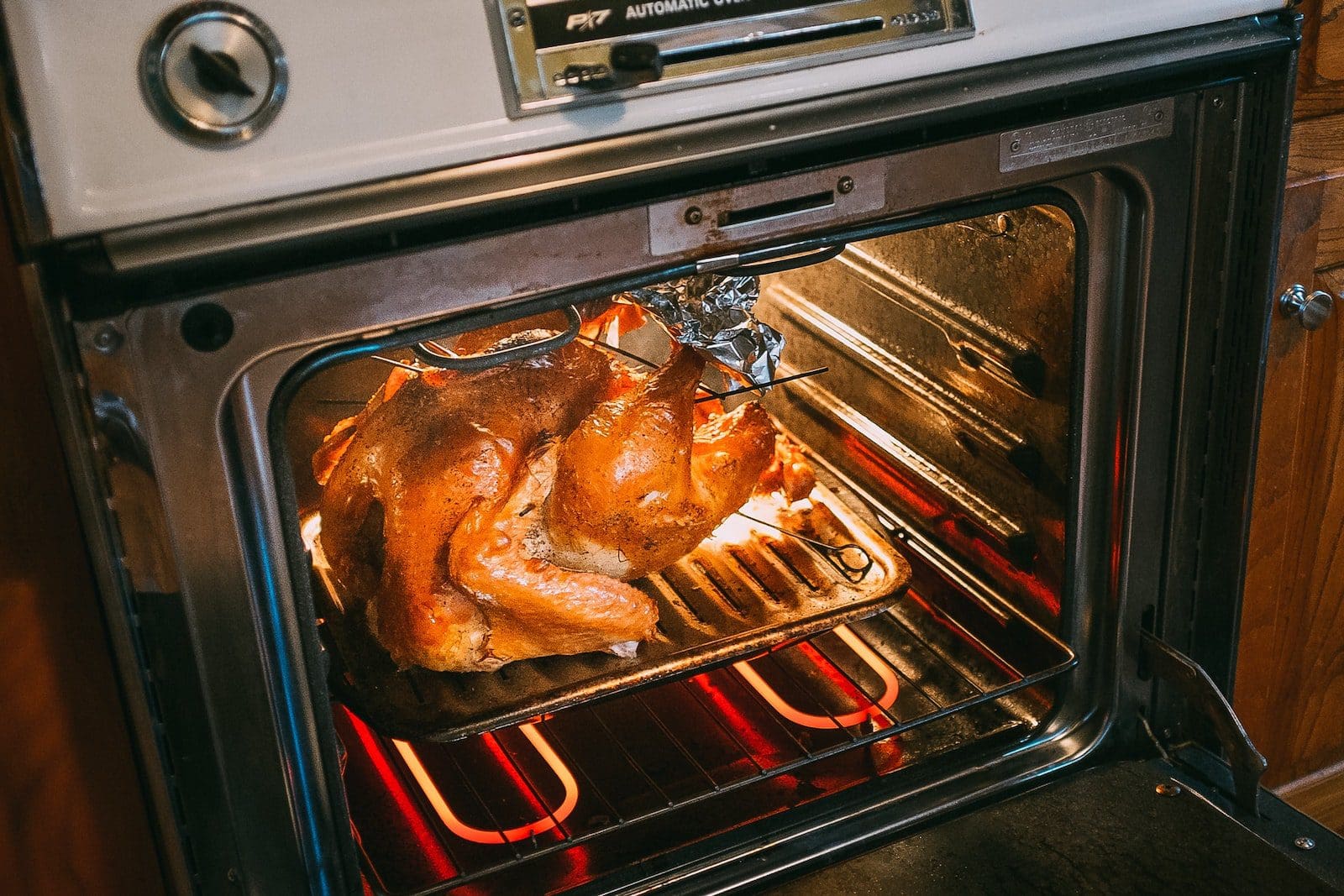Calcination and Roasting are two common methods used for heating the ore. Their difference lies in how the ore is heated with the air.
The calcination process is mainly used for heating carbonate ores. This is because carbonate ores can be heated with a limited air supply. Roasting is used for sulfide ores. This is because they are heated in the presence of air.
Key Takeaways
- Calcination is a thermal process that involves heating a solid material, such as an ore or mineral, in the absence or limited presence of air to remove volatile components or chemically change the material. At the same time, roasting is heating a material, an ore, in excess air to oxidize impurities or convert the material to another chemical state.
- Calcination removes moisture, carbon dioxide, or other volatile substances from materials like limestone or gypsum. In contrast, roasting is primarily used in metallurgy to oxidize sulfide ores and improve their properties for further processing.
- Calcination and roasting are important techniques in various industries, including metallurgy, ceramics, and chemical processing, but their operating conditions and objectives differ.
Calcination vs Roasting
Calcination is used to decompose a material and drive off volatile components, while roasting is used to convert a material into an oxide. Calcination is done at lower temperatures than roasting. Calcination is used to produce oxide materials, while roasting is used to extract metals.

Calcination is the process of converting ore into oxide by heating it. It is heated below its melting point. It can be done either in a limited supply of air or in the absence of air.
It is commonly used for converting hydroxides and carbonates to their respective oxides. For example, metal carbonates will be decomposed to produce metal oxides. It is considered to be a purification process of metals.
Roasting is one of the steps in the processing of certain ores. It is a metallurgical process that involves gas-solid reactions at elevated temperatures.
It is done to purify metal components. This process can convert a metal sulfide to a metal oxide. It can also convert them to free metal. The furnace used for roasting is a blast furnace.
Comparison Table
| Parameters of Comparison | Calcination | Roasting |
|---|---|---|
| Air supply | Ore will be heated with a limited air supply. | Ore will be heated in the presence of air. |
| Metal Oxide | Carbon dioxide will be produced. | Sulfur dioxide will be produced. |
| Impurities | Moisture organic impurities will be removed. | Volatile impurities are removed. |
| Toxic compounds | They are not released. | They will be released. |
| Used for | Carbonate ores. | Sulfide ores. |
What is Calcination?
It is a thermal treatment of a solid chemical compound. It is heated at a high temperature while it stays below the melting point. This process helps to remove volatile substances.
It also oxidizes any mass of the substance. It removes the moisture or water from the wet or hydrated ores. During calcination, the ore becomes porous and dry.
The process of calcination is done typically, in a retort. It has a chamber in which the object or material to be treated will be placed and heated.
It will not melt or oxidize to the point of melting. The retort is gas-tight. It has one wat valve that allows volatiles to be driven out of the retort chamber.
During this process, it won’t let any air come in. In some instances, these retorts are purged with noble gas or nitrogen before heating.
This is to prevent oxidation or other chemical reaction with ordinary atmospheric gases. Some sterilizers can also use a vacuum pump to exhaust the gas generated during the heating process.
Some of the examples of calcination are decomposing carbonate ores and removing carbon dioxide. This process is done to remove the calcination of limestone.
Calcination of gypsum and bauxite is done for removing the crystallization of water in the form of water vapor. It is also used for decomposing volatile components from raw petroleum coke.

What is Roasting?
It is the process of heating a sulfide ore. It will be heated at a high temperature in the presence of air. During the process of roasting, non-metallic impurities and moisture in the form of volatile gases will be released.
The process consists of solid-gas thermal reaction which includes reduction, chlorination, oxidation, sulfation, and pyro hydrolysis. For the process, it involved sulfides which act as a major source of air pollution.
But the main drawback is it releases a large amount of metallic, toxic, and acidic components. It can cause harm to the environment. When you roast zinc sulfide, it will convert it into zinc oxide.
This process is applied to sulfide minerals. This process is done because reducing sulfide directly is not the best method. Here, the ore will be subjected to very high temperatures when they are exposed to air.
So, the ore reacts and forms an oxide in some cases. It also forms metal as well. It is done with excess air whereas in calcination the air supply will be limited.
So, it cannot be carried out on carbonate ores. This process is mainly used in sulfide ores because while removing the sulfur might get escaped in the form of gas. Roasting will stop the escaping of air.

Main Differences Between Calcination and Roasting
- Calcination is used for thermal decomposition or treatment of carbonate ores. On the other hand, roasting is used for thermal decomposition or treatment of sulfide ores.
- Toxic compounds are not released during the calcination process. On the other hand, toxic and acidic compounds will be released in the roasting process.
- In the calcination process, moisture organic impurities are removed. On the other hand, in the roasting process, volatile impurities are removed.
- During the calcination process, carbon dioxide will be produced along with metal oxide. On the other hand, during the roasting process, sulfur dioxide will be produced along with metal oxide.
- In calcination, the ore will be heated with a limited supply of air. On the other hand, in roasting the ore will be heated along with the presence of air.

- https://journals.co.za/doi/abs/10.10520/AJA0038223X_1842
- https://www.sciencedirect.com/science/article/pii/S0892687519304406
